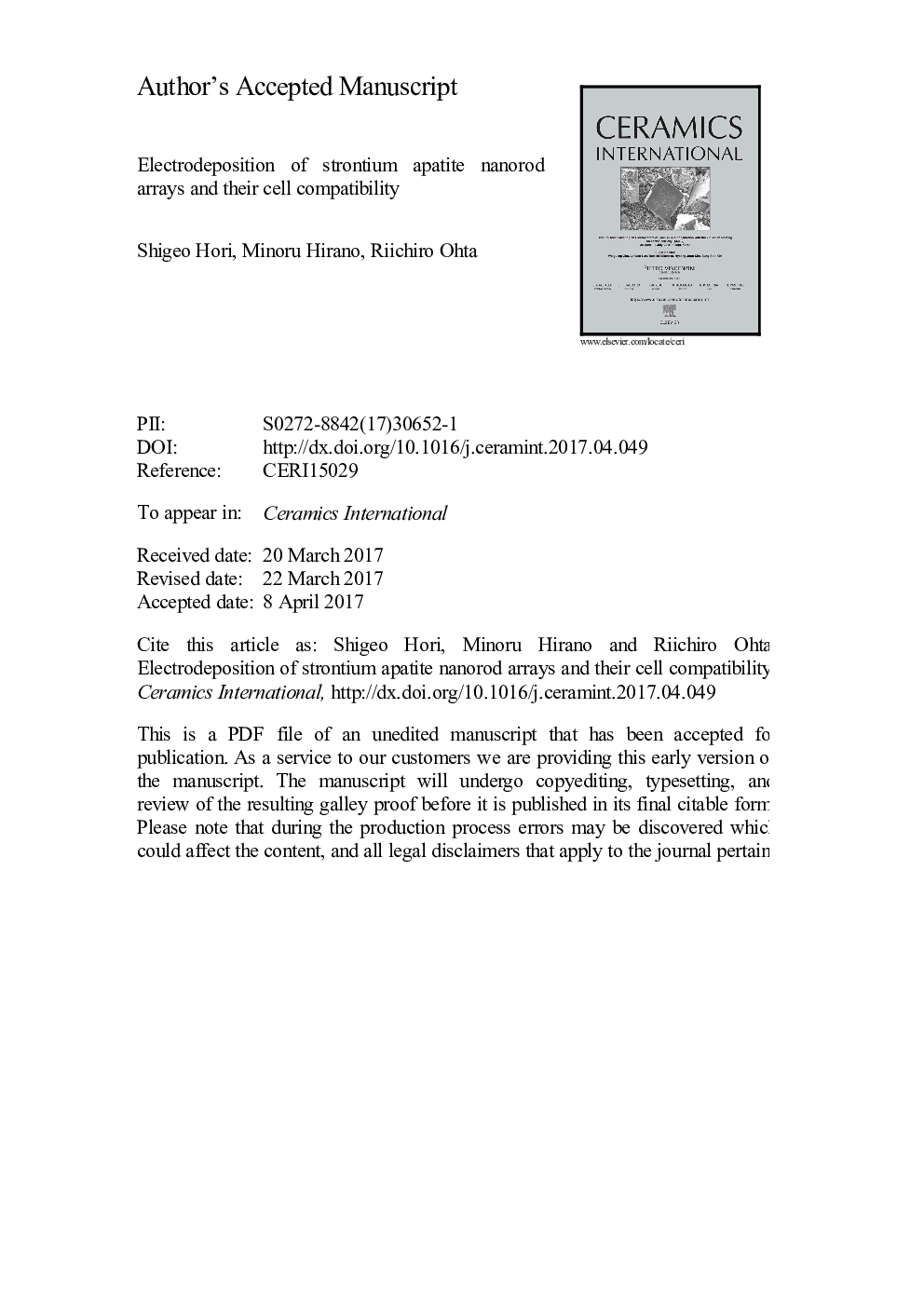| Article ID | Journal | Published Year | Pages | File Type |
|---|---|---|---|---|
| 5438377 | Ceramics International | 2017 | 27 Pages |
Abstract
Hydroxyapatites have a biocompatibility that is influenced by their composition and structure. We electrodeposited strontium hydroxyapatite (SrHAp) thin films on Ti substrate and evaluated their cell compatibility for the first time. Electrodeposited thin films have a uniform surface morphology on a scale of micrometers and comprise isolated nanorod-like grains with diameters of 100-200Â nm standing on the substrate. High current densities during the electrodeposition were found to produce radial agglomerates of SrHAp rods on nanorod arrays. In comparison with the bare Ti substrate, the SrHAp thin film increased the proliferation and survival (reduced mortality) of the respiratory epithelial cell line. In addition, the levels of expression of bone differentiation markers such as runt-related transcription factor 2 (Runx2) and BGLAP genes in an osteoblast cell line significantly increased on the SrHAp thin film compared with those on the bare Ti substrate.
Related Topics
Physical Sciences and Engineering
Materials Science
Ceramics and Composites
Authors
Shigeo Hori, Minoru Hirano, Riichiro Ohta,
